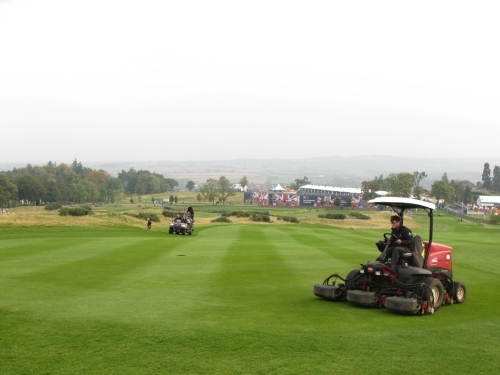The Colt Course at Close House was first conceived in late 2004. The vision of property owner Graham Wylie, it was to be a new golf course for the Newcastle area by Scott Macpherson, golf course architect (29th September 2017)

The Colt Course at Close House was first conceived in late 2004. The vision of property owner Graham Wylie, it was to be a new golf course for the Newcastle area. His vision was for a championship course that would be the best in the North-East, and a premium golfing experience for his members
The land for the golf course is a south-facing parcel on the side of the River Tyne. It has considerable slope and today the course has approximately 300 feet of fall (91 metres) from the high point of the course to the low point. The land also features a Roman fort, underground services, protected trees – all of which added to the design challenges.
The course was to be designed in the ‘style’ of Harry Colt and to be an old English course to fit in harmony with the old English property at Close House which may date back over 230 years.
The golf course went through a few iterations before the final layout was settled. Once the main parcels of land had been purchased and the planning permissions secured, construction started in 2009.
The main contractor for the project was M.J. Abbott. Approximately 130,000m³ of dirt was moved during construction – a relatively low amount in modern standards but perhaps similar to amounts moved during the 1920s and 1930s. The focus was on the greens and bunkers – these combined with the elevation change provide the main defence for the course.

The greens are all USGA type and average a little over 600m² each. There is some slope to the putting surfaces, but we were very aware of leaving sufficient area for pin positions – a decision which has proved valuable with the British Masters being played on the course, where the greens are being cut at 3mm and running at 10.6 on the stimpmeter.
An unusual feature of this modern championship course is the fact it has no fairway irrigation. This decision was made based on a study of the local weather conditions. While the course can dry out in the summer, some rain also falls during this period, so the course only has irrigation on the tees, greens and green approaches. This lack of fairway irrigation benefitted the course by allowing greater fairway width, No longer was the acreage on irrigated turn a constriction on course design strategy. Five holes that been fitted from this are 2, 7, 8,13, and 17 (NB these are the hole numbers for the British Masters : 16, 3,4,9, and 13)
The routing for the course is one loop of 18 holes. Golfers can stop after 9 holes at the practice facility where food and drink is available, but few golfers only play 9-holes. For the British Masters the normal sequence of holes remains unchanged, but the course has been renumbered and the professionals are starting on hole 5.
This was a practical decision so the tented village, hospitality, TV compounds, spectator access etc could be more easily positioned. It’s turned out to be a good decision with visitors being right in the middle of the action as soon as they enter the gates. The normal par 3 4th hole has become the 18th hole for the event and again, this has worked well because the European Tour have turned the hole into an amphitheatre of excitement by surrounding it with grandstands and hospitality tents.

Since the course opened in May 2011, it has been beautifully grown-in, maintained and prepared for the British Masters by Head Greenkeeper Brian Clark and his team. The Club has 17 greenkeepers for all 45 holes and the sports pitches they maintain for Newcastle University, but numbers have been boosted this week by 25 experienced green keepers volunteering to ensure the course is in tip-top condition for the British Masters. The extra help has ensured the entire course is mown each evening or morning (green keepers start in the dark at 4.30 am during tournament week). They also roll the greens, blow clippings, rake and sieve all the bunkers – it’s a mammoth effort.
It’s been a real privilege to design this golf course and to be part of a team to help it evolve into a championship venue. I hope many golfers get to visit Close House and play the Colt Course – while it’s testing the best players in the world this week, it was designed to be enjoyed by golfers of all abilities.
Close House http://closehouse.com/
Scott Macpherson http://www.scottmacphersongolfdesign.com/

